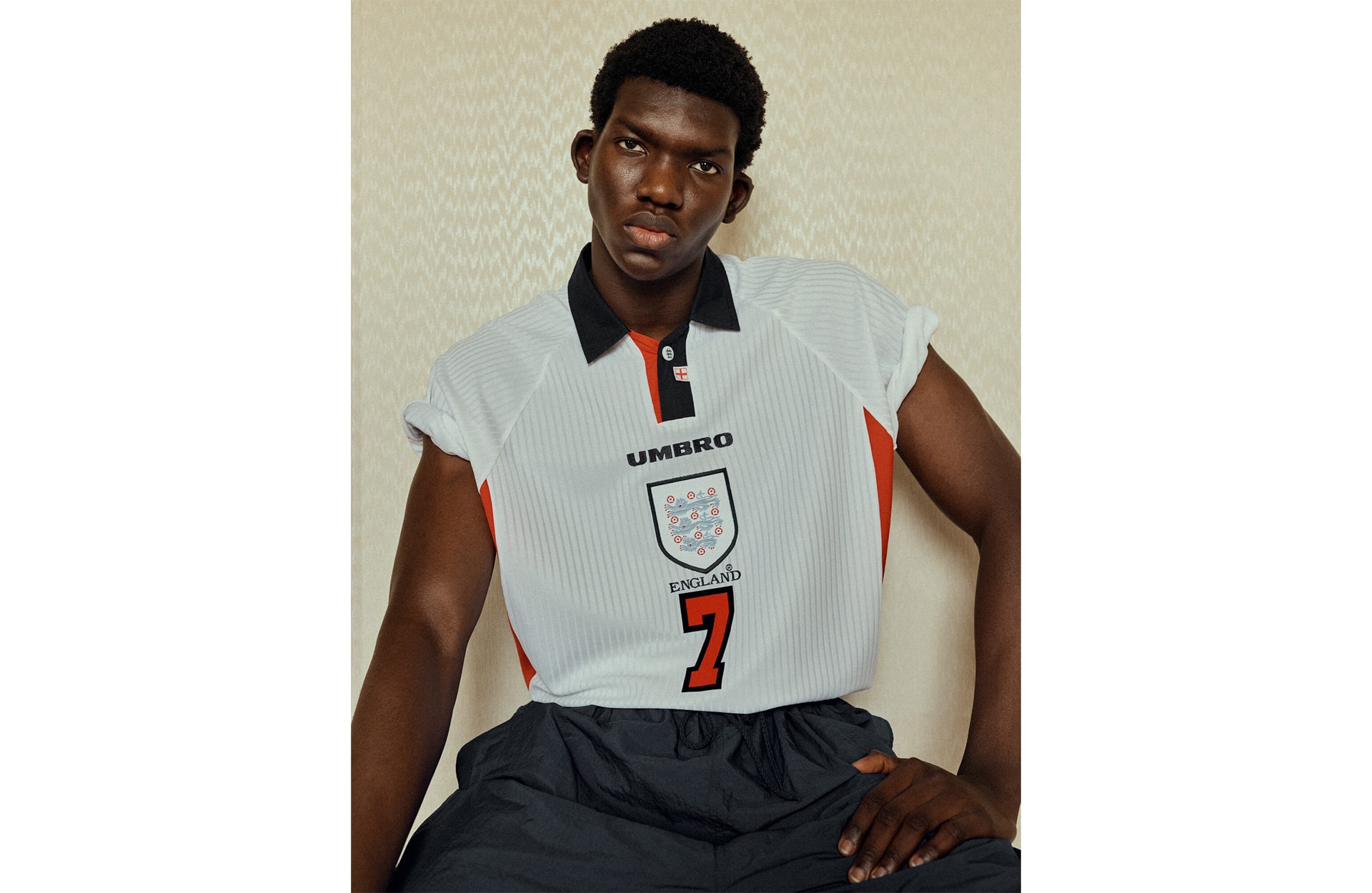The acclaimed photographer takes us behind the scenes of his stylish new shoot, which showcases Bedford’s classic vision and reverence for football jerseys using his own Umbro England shirts.
It wasn’t until we identified David Beckham’s undeniable presence in the styling and poses that it really hit Neil Bedford that his latest football shoot This Was England was semi-autobiographical. “It's basically a stylistic version of how I would have loved to look at 18 but didn't,” he quips over Zoom, noting how the models’ on-trend outfits are at odds with his current preference for baggy “Baby Gap“ clothing. “Especially the trainers – I was desperate for a pair of adidas Micropacers, which one of the guys wears, and I have them now.” The six retro England jerseys pictured are the photographer’s favourites and align with some of the Three Lions’ most thrilling tournament runs between 1988 and 2000.
Bedford’s epic career snowballed after the London College of Fashion BA graduate started shooting for magazines during his MA. While the Bradford-born, North Yorkshire-based photographer has two LCF photography degrees and gained invaluable confidence studying, he doesn’t believe the creative medium can be taught beyond the principles needed to hone the craft through experience. During his 15 years in the industry, Bedford has captured traditional portraits of famous athletes and musicians – including Beckham for SoccerBible Magazine issue 10 (2017) and Pharrell Williams (2018) – alongside magazine editorials for the likes of Kinfolk and British GQ; and commercial C.P. Company campaigns since Spring/Summer 2022.
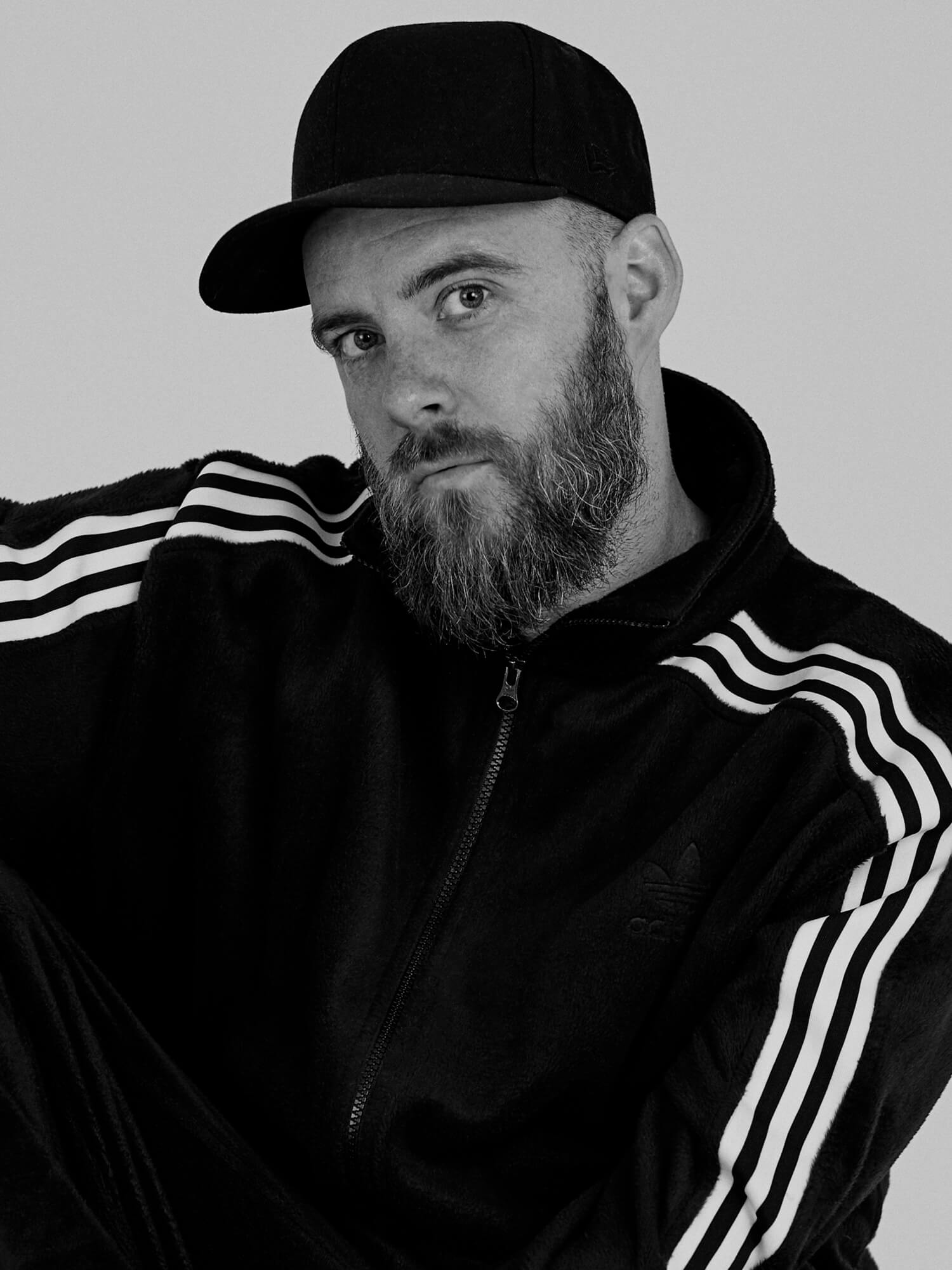
Neil Bedford
Football is the theme that the Bradford FC fan keeps coming back to. “Being into football is like having a cigarette. You can go onto any set and go ‘Who do you support?’ and it can break the ice straightaway,” Bedford shares. “When I'm doing portraits, I like to have a conversation – we might not have anything in common but we both enjoyed that free kick in 2002.” The SoccerBible Beckham cover shoot almost didn’t happen because the photographer was supposed to be on his best friend’s stag do. “[Beckham] was shot with two lights and I was nervous. He’d grown his hair so he looked like the guy I had posters of. He walked in, and I remember thinking, ‘Shit it’s real. He's there’,” he says. “I still love that shoot and it helped me go on to work with him again. Now if people don't answer the phone, I'll text them saying ‘you're not David Beckham, you're not big enough to ignore [the call]’.”
We laugh swapping stories back and forth and the photographer is authentic as he answers every question honestly. Aware that his son will access his portfolio in the future, This Was England marks a compelling new direction for Bedford. “This is a lovely stepping stone to making a personal project. I can take it much further by doing every shirt dating back to the 1980s which could lead to a nice book,” he reveals. “Something that will make someone who likes football shirts happy is all I want to do [because] there are plenty of people who shoot old football shirts.” The looming threat that AI poses to photography also comes up but the creative is sure that This Was England couldn’t be generated by a programme just yet.
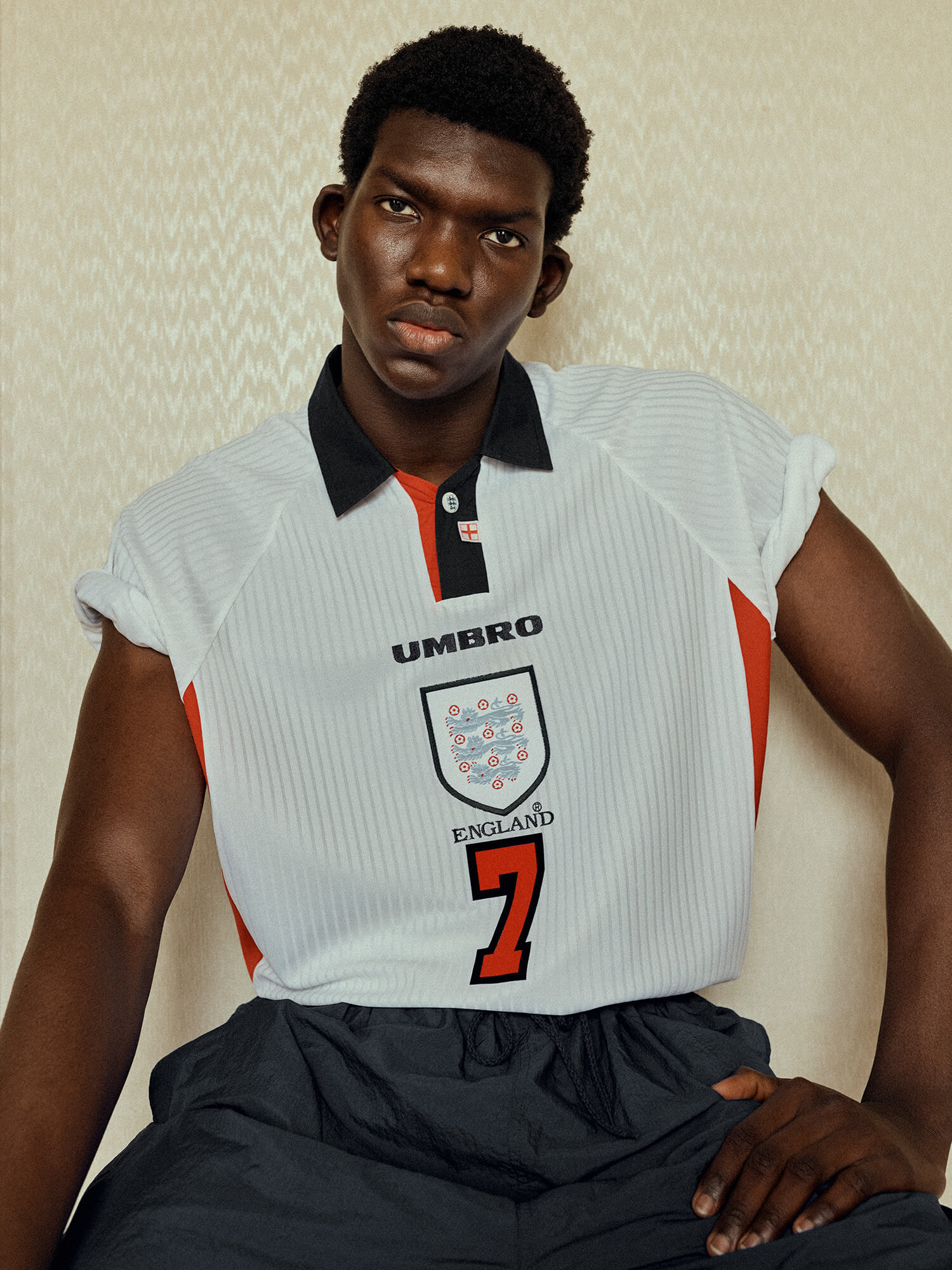
Umbro | England Home | 1998
Tell us about what you do.
“I'm a photographer because I love making images. Photography allows you to meet people you might not ordinarily meet, learn things that I probably wouldn't ordinarily learn, and that journey can be amazing. It also suits how I would like to make a living.”
Why did you create This Was England. Umbro England Shirt Collection: 1988 – 2000 [incomplete]?
“To almost celebrate those shirts, for want of a better word. I knew how I wanted each image to look and the clothes were curated by me [mainly] from my archive, just going with what I would have worn. A lot of the shirts go back to when I was around 18. I was born in 1981 so it’s late 1990s, early 2000s fashion which is relevant now. I referenced David Beckham’s Arena HOMME+ shoot (AW 2003/2004) which is why I rolled up Eniola’s sleeves when he sat and he's got the number seven.
“Obviously, you've got This Is England and I thought it'd be quite cute to call this This Was England. It alludes to the shirts and the house being from the past and it's a playful take on where we are in England. I was trying to think of a pun that would work and didn’t sound silly.”
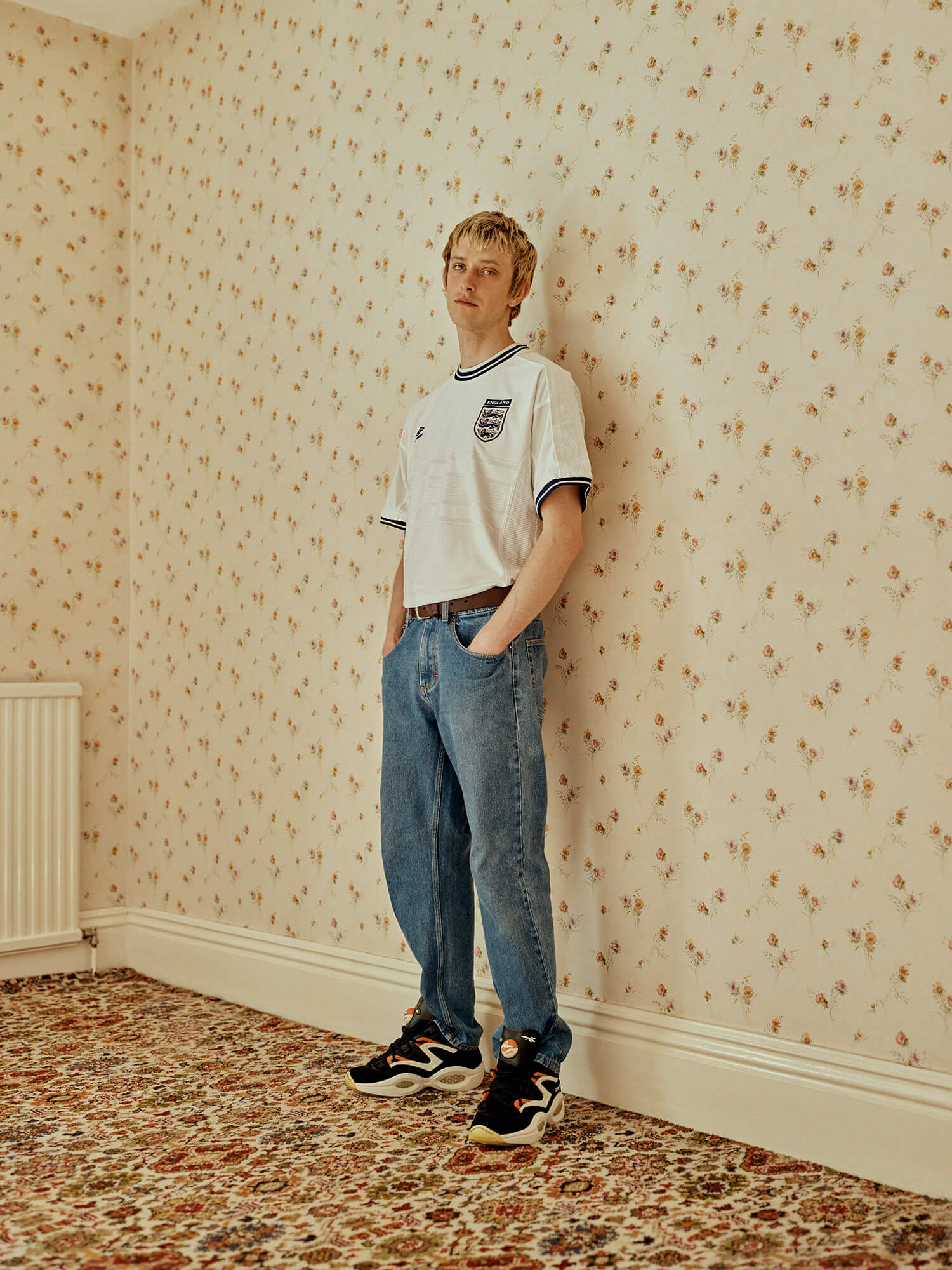
Umbro | England Home | 2000
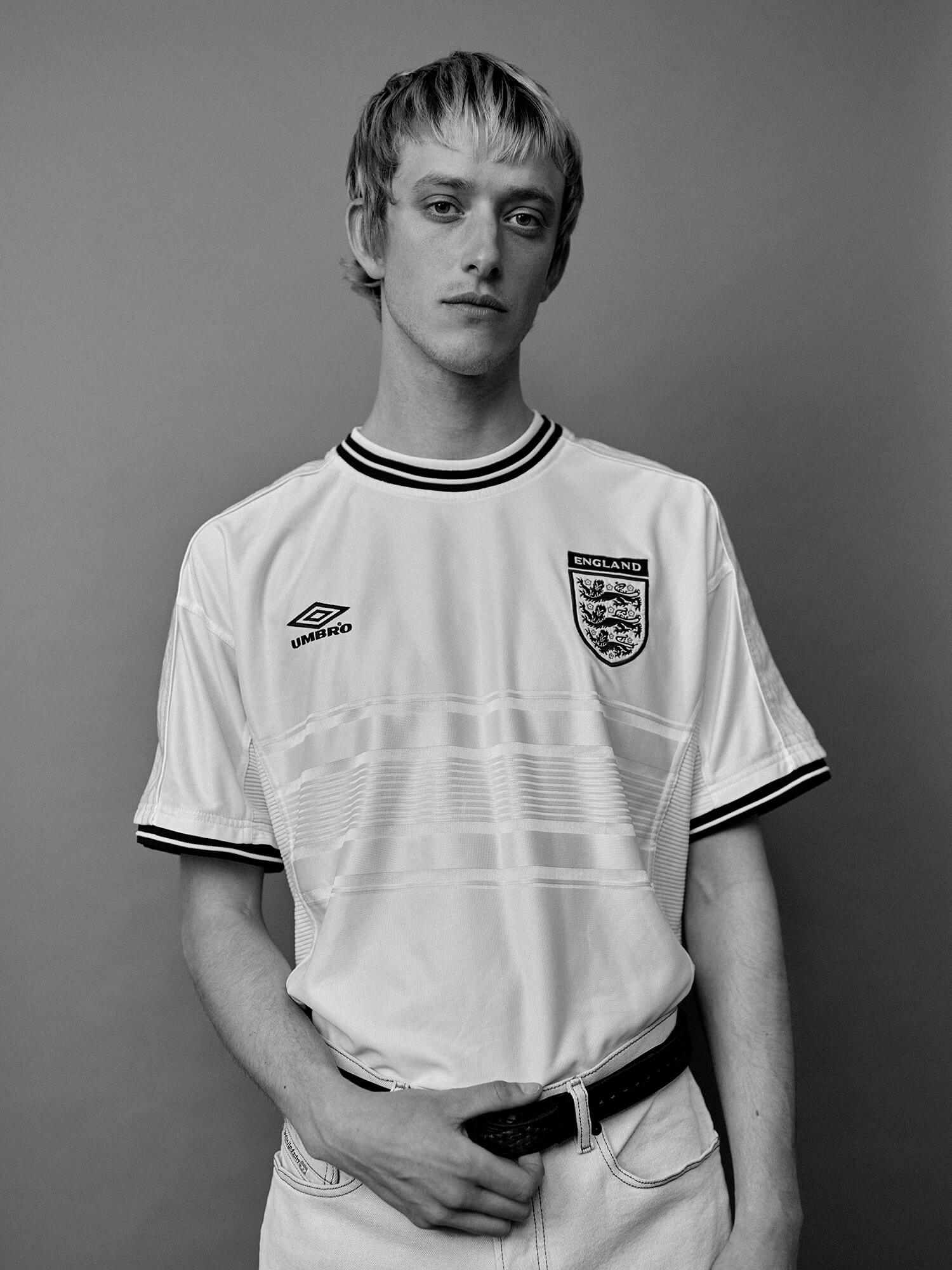
How did the shoot day go?
“The owner was selling her grandmother’s empty house and I'd seen it on a viewing. I knew it would be perfect for photographing these shirts in particular. With the Euros coming up, it was a nice time to shoot. I found Eniola and Sky and said ‘let's hang out and I'll take some photographs of you in the shirts.’ I shot it to look like a set and did it all by myself. I have not reinvented the wheel but I've presented these football shirts in a way that gives them gravitas that I like to look at.”
Where did the desire to collect football jerseys come from?
“I started with Bradford City shirts, my local team, and I still have the ones my parents bought me when I was five and six in 1986. I used to have them pinned all over my bedroom wall as a kid and now they sit in suitcases. [Football jerseys] represent something that you can’t throw away. I don't seek ones that don't mean anything to me and if I go abroad and we see a game, I'll buy a shirt. They are a cheap way of collecting a memory. You can take yourself back to a period very quickly by seeing a football shirt and if it isn't a time you can remember, you remember a game or a player.“
“I've been collecting England jerseys since the early 2000s and I love every kit that Umbro did with England in the 1990s and early 2000s as it was very much an English brand. We had the white shirt that Gascoigne [wore] but left that one out because It felt too easy and we’ve seen it 1000 times.”
Can you share a memory you have of the shirts featured?
“A lot of them go back to what David Beckham was doing. Whoever the kids love now, David Beckham was that player to me growing up. I remember being away in Portugal, having the David Beckham haircut and thinking I could put on the 2000 England Home jersey with a rounded collar and Umbro taping down the sleeves. They all remind me of a time when we were freer, loved football for football, and were mesmerised by idols as players were still mysterious.”
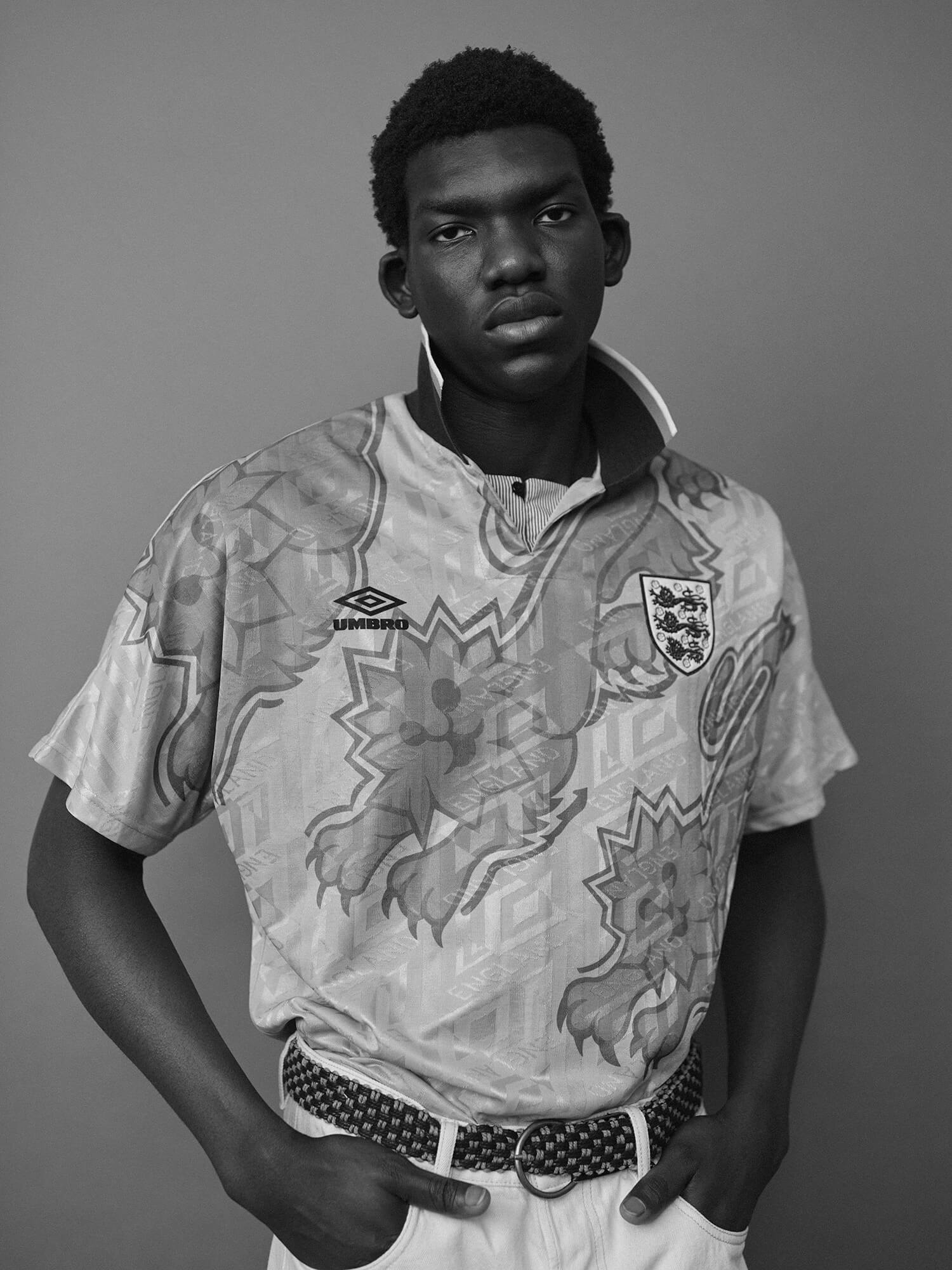
Umbro | England Third | 1992
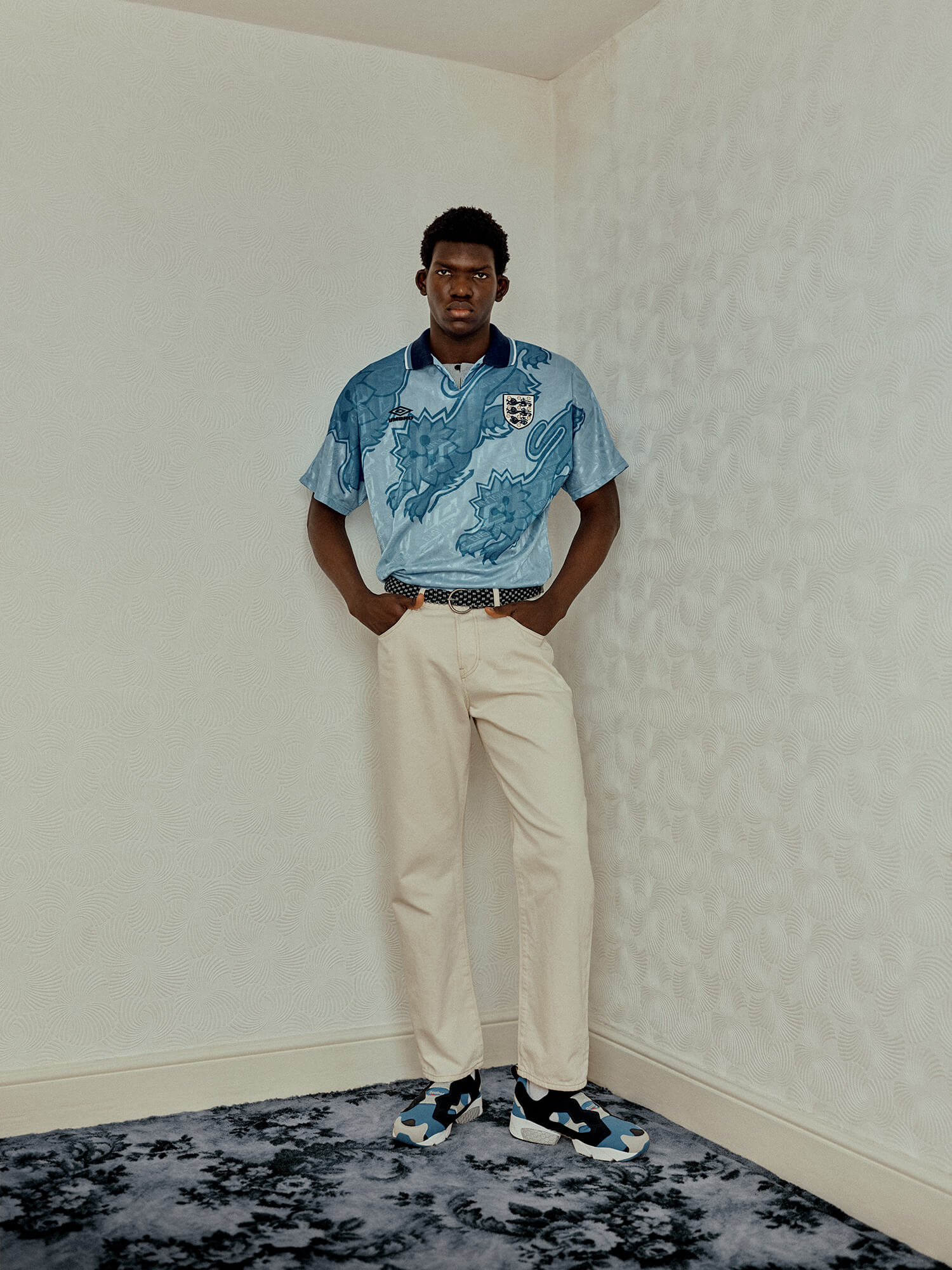
Let's widen the net. How has your photography practice evolved over the past 15 years?
“I've always wanted to take classic photographs even when I was studying. I was influenced by Richard Avedon, David Bailey, and Terry O'Neill, and I never wanted to be a trend. I'm refining how I make classical images through knowledge, understanding, and passion. I try to make images that would make me envious on the outside and I put my bar quite high because there are millions of photographers.”
Are there any other adjectives that you'd use to describe your style?
“Considered. I like to joke and my work is quite serious. Maybe it’s a fear of letting myself down as a photographer or deep down inside I don't always want to be laughing and joking. Lighting and grading are very important. I've never gone back to photographing on film because I've got into a rhythm I'm happy with. I can check my work, show clients, and get instant gratification. My anxieties do not work well not knowing what I've photographed. A studio with two lights, my go-to wheelie chair, and the right person is all I need. Once you’re 15 years in, you can't always think of a new way to photograph a portrait. I'll just change minor things like using the light differently.”
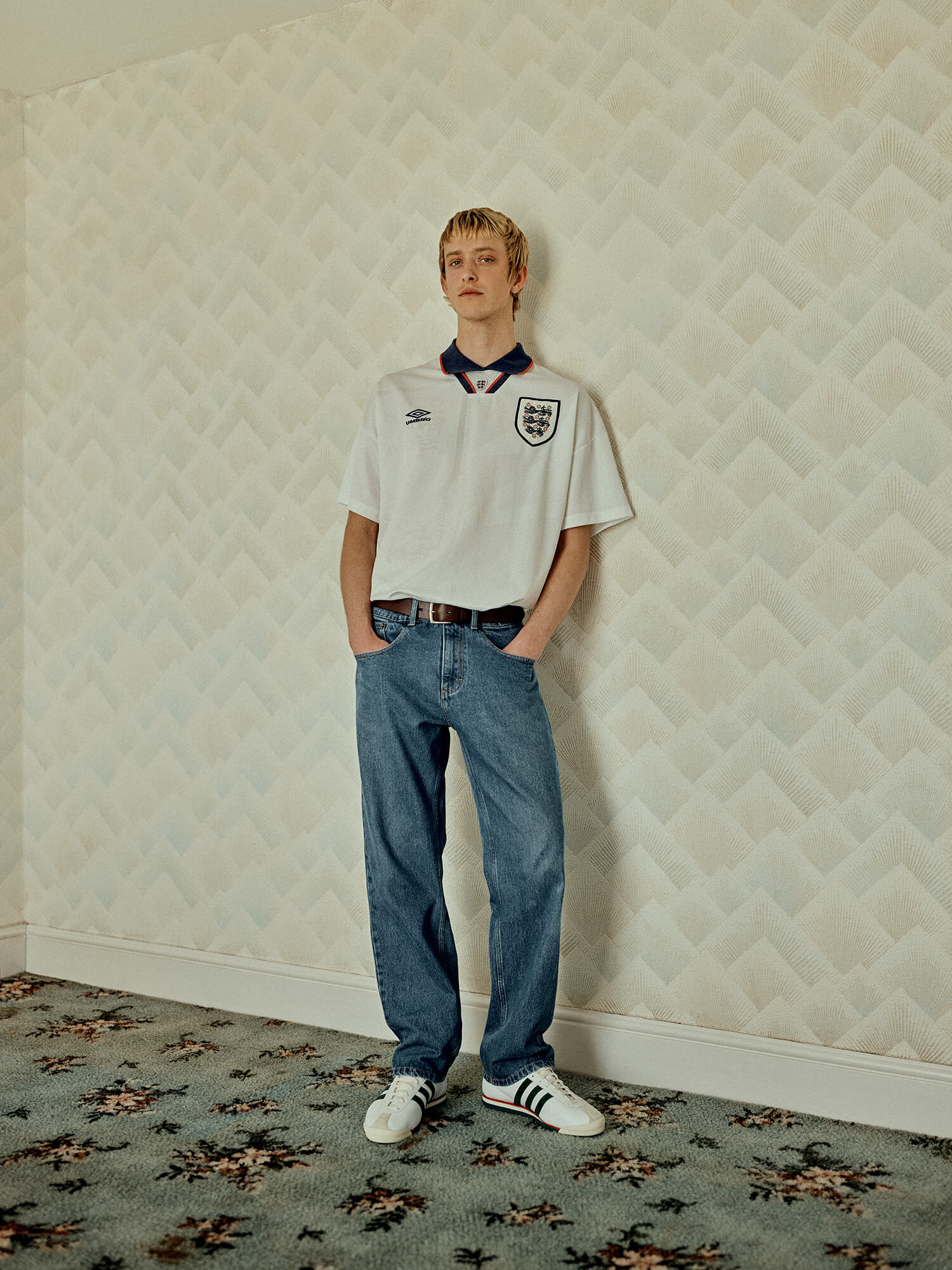
Umbro | England Home | 1994
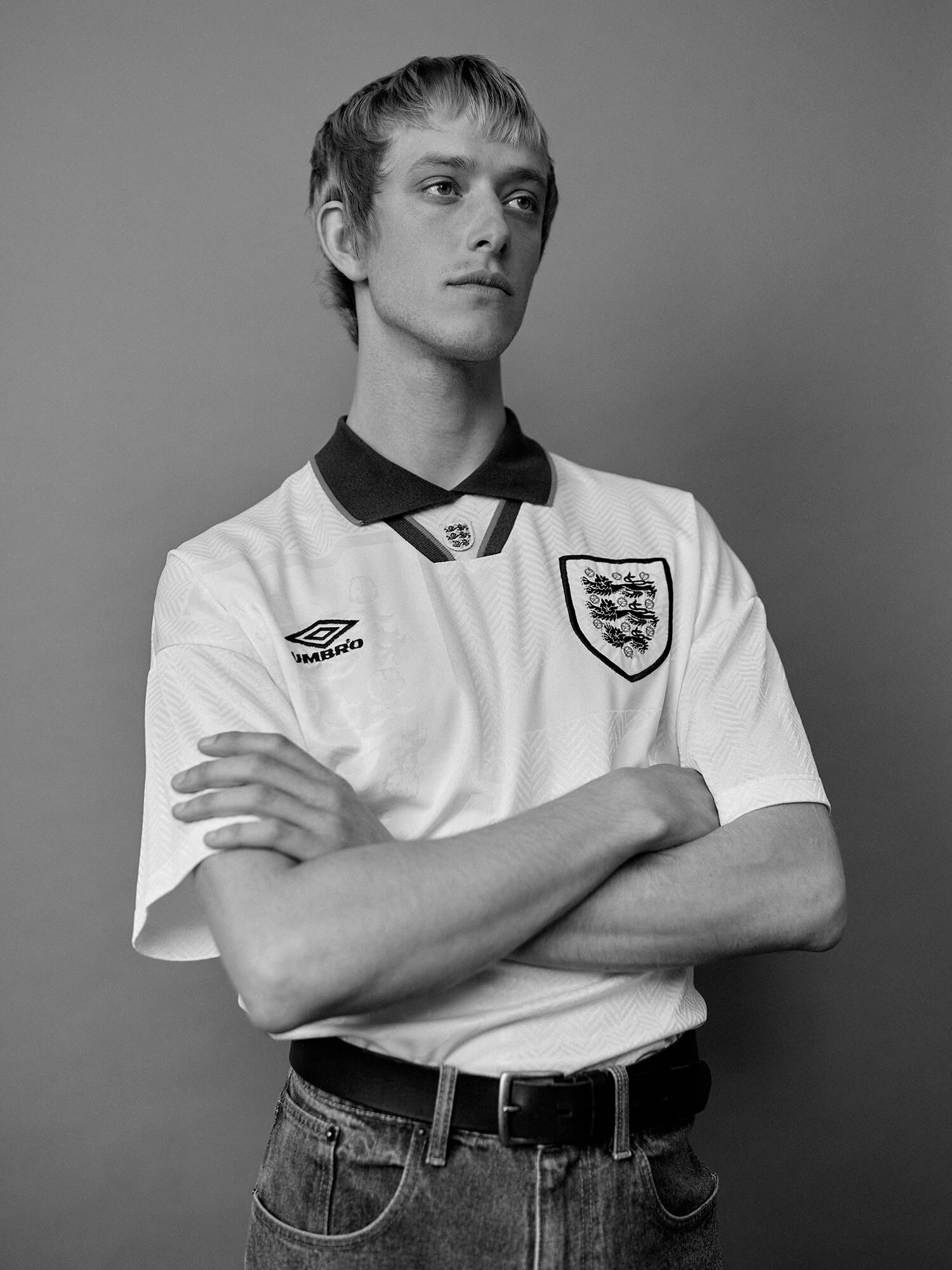
Of all the images you’ve created, which is your all-time favourite?
“Kobe Bryant for Highsnobiety has to be up there. When you're on the plane to LA, trying to understand why you were given this opportunity, it's overwhelming. I had 25 minutes and did exactly what I said I was going to do. I remember getting back to the hotel after the shoot and I saw the picture: him with his head against the basketball. I had to go for a walk because I wasn't ready to congratulate myself. It's a really fantastic image.”
Tell us about another memorable football project — it was a big moment when a photographer of your calibre shot The FA Women’s Super League campaign (2019).
“I was so excited when that came through because I’ve got a genuine interest in women’s football. I loved the idea of shooting them from above like toys, little figures in football positions, and I've still got prints of it at home. I would have liked to shoot Steph Houghton and her husband [former] Bradford City player Stephen Darby. I’d have loved to be in that household where they both do the same thing. I’ve shot Eric Cantona, Teddy Sheringham, and I would love to shoot Jude Bellingham.”
How do you feel social media has changed visual culture and the way photography is treated?
“It puts visual culture in everybody’s household. We [photographers] always used to get credit and now you don't always. I see my images around the internet where there's no mention of my name. People aren’t versed in how you should respect an image. It's taken somebody's mind, money, a team and everything [else to create it]. Then someone just uses it for something or it gets turned into a meme and it’s heartbreaking. I don't get too hung up on it anymore. I used to [pull people up on it] but I found out it was more anger than I wanted.”
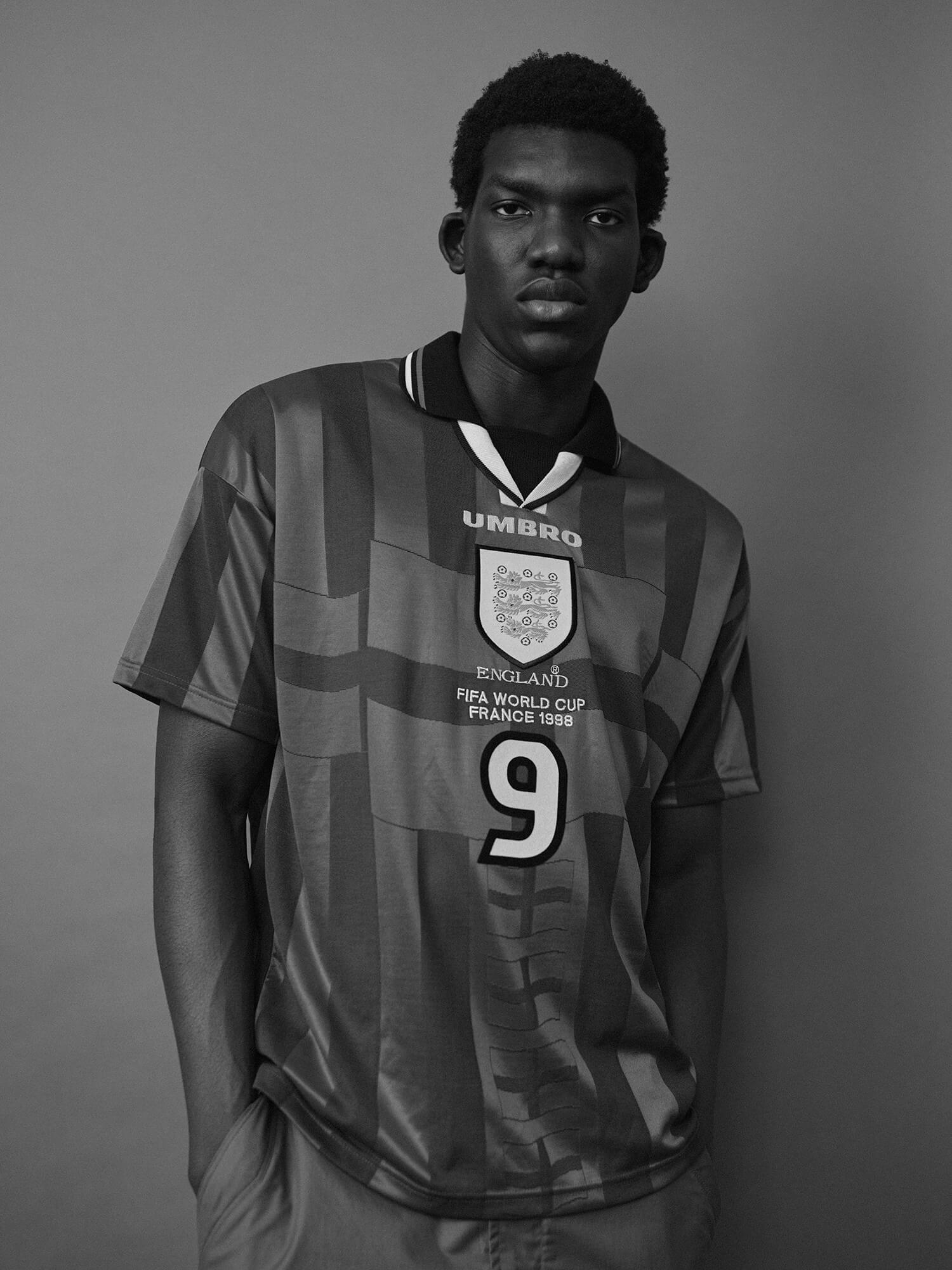
Umbro | England Away | 1998
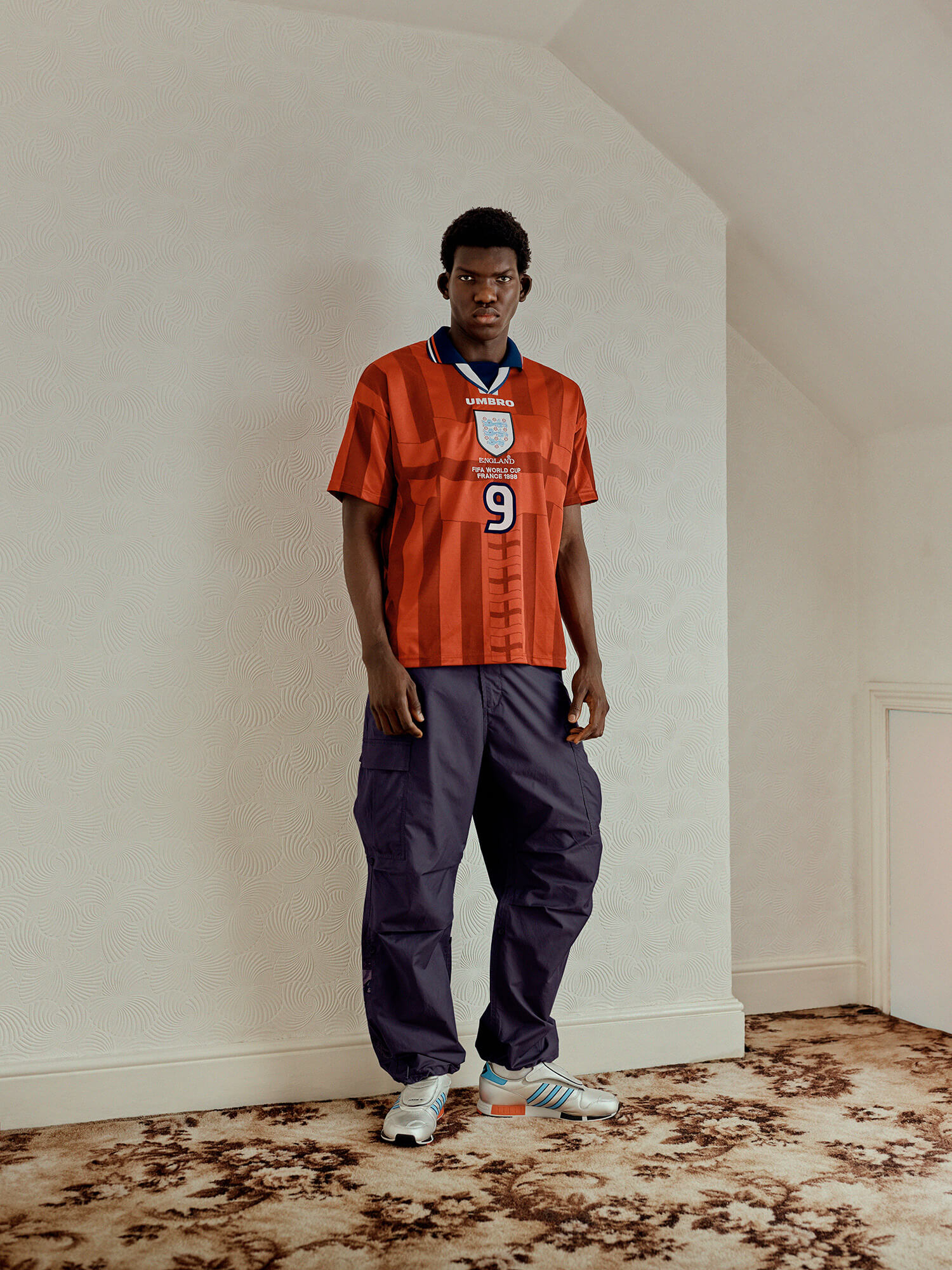
When you think of Creative Soccer Culture, who comes to mind?
“Louis Bever straight away. Mixing art with football shirts, specifically older football shirts, can never run out. He's stuck to it and it's very admirable. Through his work, you get that it's an honest thing. He knows football and that's very beautiful.”
What can we expect from you in the rest of 2024?
“I'm working with the music band Kasabian and we'll be putting another book out towards the end of the year. I want to continue exploring This Was England over the next year but it doesn’t just have to be England shirts. I also have a loose idea based on following away football shirts because I've always had more of a fascination with the way they don't have to adhere to [club colours] and you can have real fun.”
Finish this sentence: the future of photography is…
“Keeping it human. I don't want AI to come for me (laughs). I hope it will be policed because it's making images based on photographers’ work. So it's scary but at the minute it's fashionable and I think people will run with it for a while. With AI, we're at iPhone one and we've still got to get to iPhone 15.
“Photoshop is a form of AI and we can use it as a tool to help perfect. But if I retouch an image too much, I might as well build it. I don't want to take out the bits that keep it real: where the carpet isn't perfect, where the creases aren't sitting exactly where I want them to sit. I'm getting used to this being a positive thing because it shows realness and that a human created it.”
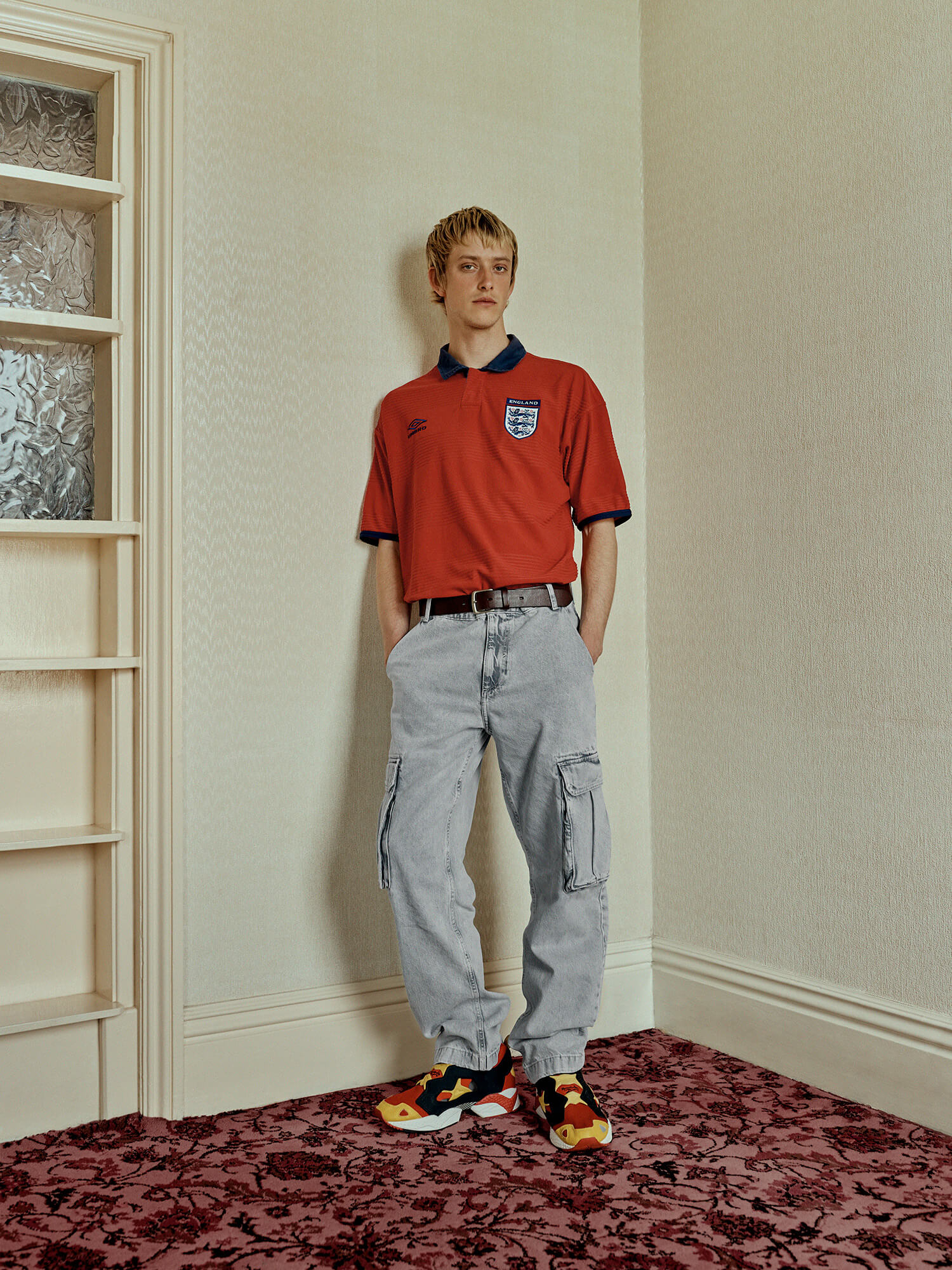
Umbro | England Away | 2000
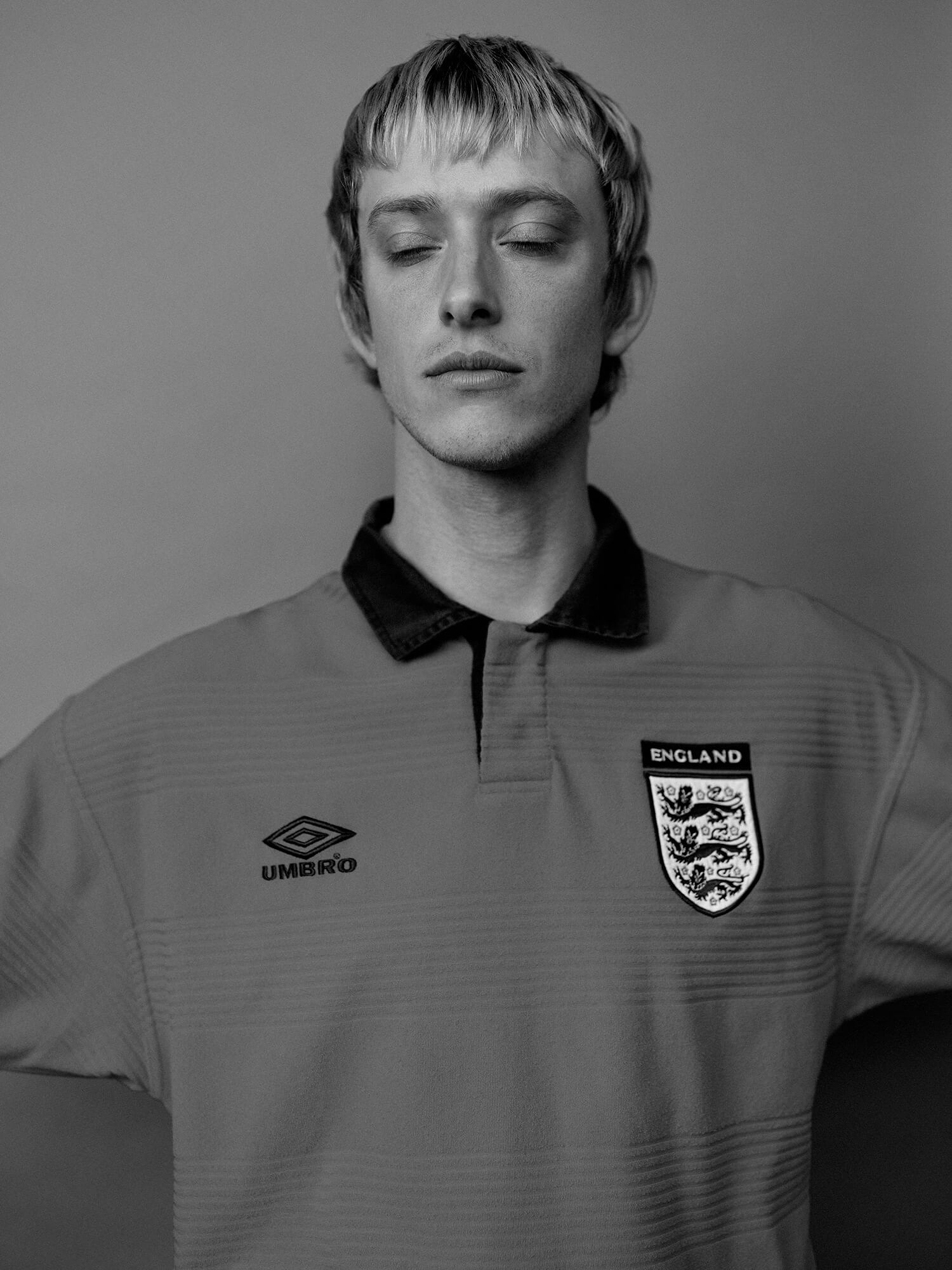
This interview has been edited and condensed for clarity.
Creative Credits
Assistants: Andy Malone and Alice Kemp
Models: Eniola and Sky, both from Savalas Models
Research Assistant: Morgann Russell
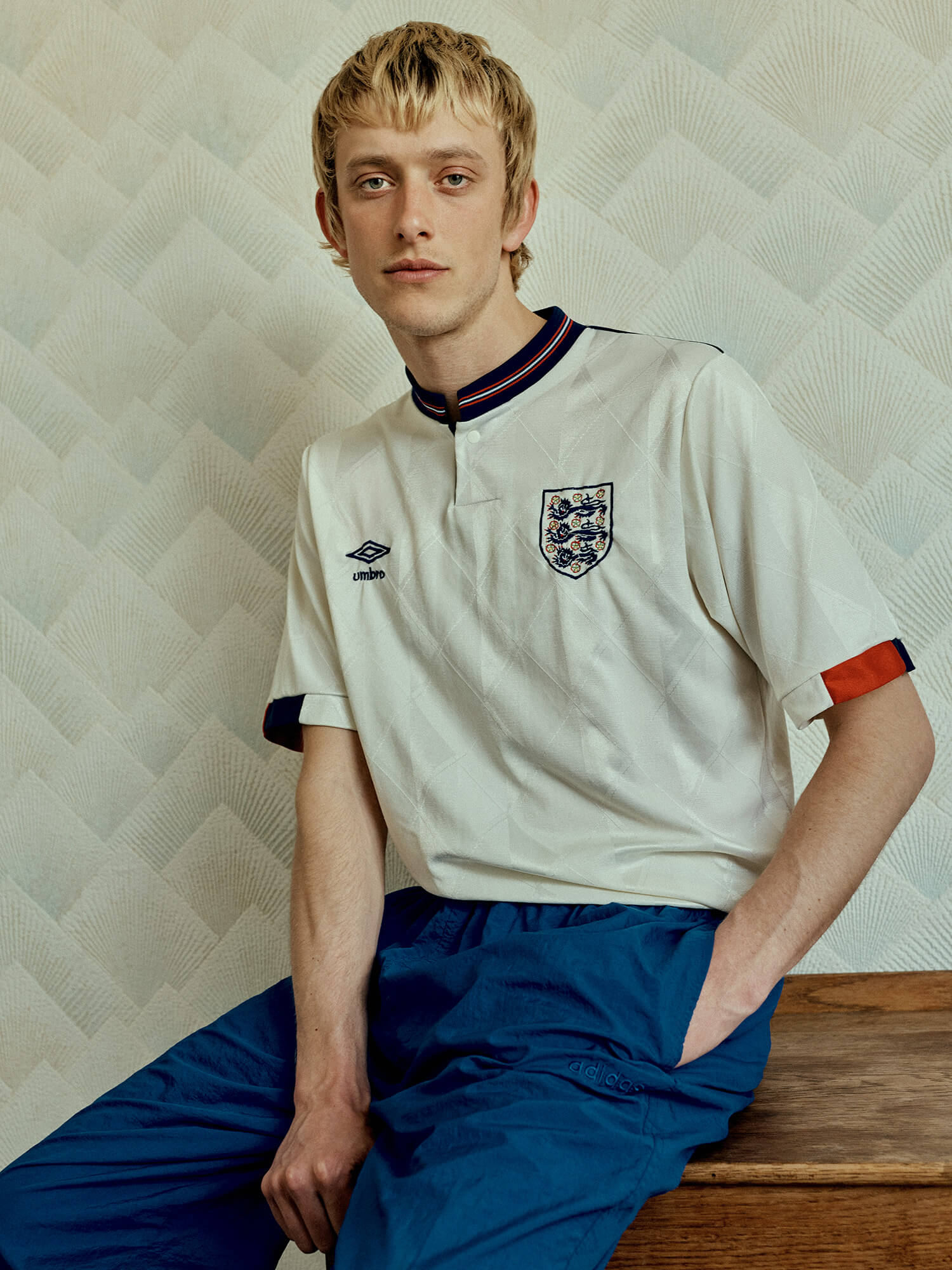
Umbro | England Home | 1988
Shop Retro International Football Shirts at https://www.prodirectsport.com/soccer/
